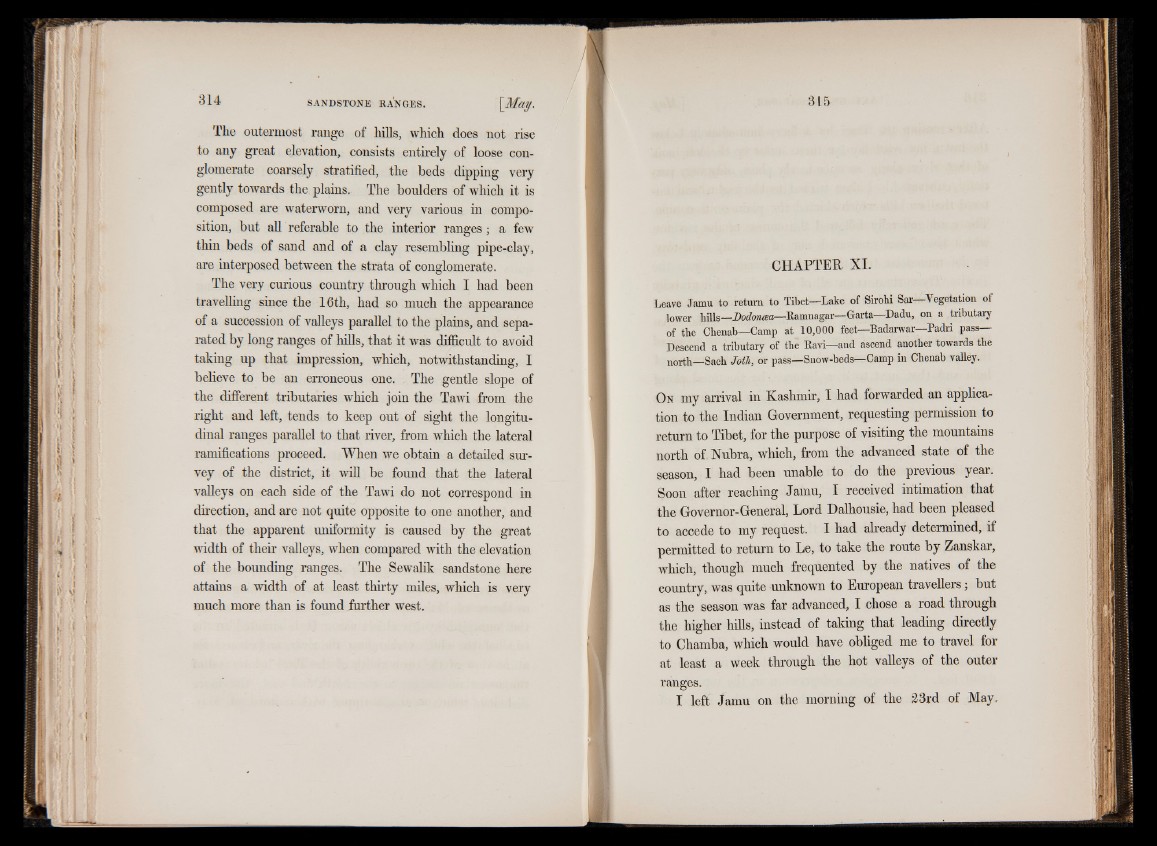
The outermost range of hills, which does not rise
to any great elevation, consists entirely of loose conglomerate
coarsely stratified, the beds dipping very
gently towards the plains. The boulders of which it is
composed are waterworn, and very various in composition,
but all referable to the interior ranges; a few
thin beds of sand and of a clay resembling pipe-clay,
are interposed between the strata of conglomerate.
The very curious country through which I had been
travelling since the 16th, had so much the appearance
of a succession of valleys parallel to the plains, and separated
by long ranges of hills, that it was difficult to avoid
taking up that impression, which, notwithstanding, I
believe to be an erroneous one. The gentle slope of
the different tributaries which join the Tawi from the
right and left, tends to keep out of sight the longitudinal
ranges parallel to that river, from which the lateral
ramifications proceed. When we obtain a detailed survey
of the district, it will be found that the lateral
valleys on each side of the Tawi do not correspond in
direction, and are not quite opposite to one another, and
that the apparent uniformity is caused by the great
width of their valleys, when compared with the elevation
of the bounding ranges. The Sewalik sandstone here
attains a width of at least thirty miles, which is very
much more than is found further west.
CHAPTER XI.
Leave Jamu to return to Tibet—Lake of Sirohi Sar Vegetation of
lower hills—Dodoncea—Ramnagar—Garta—Dadu, on a tributary
of the Chenab—Camp at 10,000 feet—Badarwar—Padri pass
Descend a tributary of the Ravi—and ascend another towards the
north—Sach Joth, or pass—Snow-beds—Camp in Chenab valley.
On my arrival in Kashmir, I had forwarded an application
to the Indian Government, requesting permission to
return to Tibet, for the purpose of visiting the mountains
north of Nubra, which, from the advanced state of the
season, I had been unable to do the previous year.
Soon after reaching Jamu, I received intimation that
the Governor-General, Lord Dalhousie, had been pleased
to accede to my request. I had already determined, if
permitted to return to Le, to take the route by Zanskar,
which, though much frequented by the natives of the
country, was quite unknown to European travellers; but
as the season was far advanced, I chose a road through
the higher hills, instead of taking that leading directly
to Chamba, which would have obliged me to travel for
at least a week through the hot valleys of the outer
ranges.
I left Jamu on the morning of the 23rd of May.